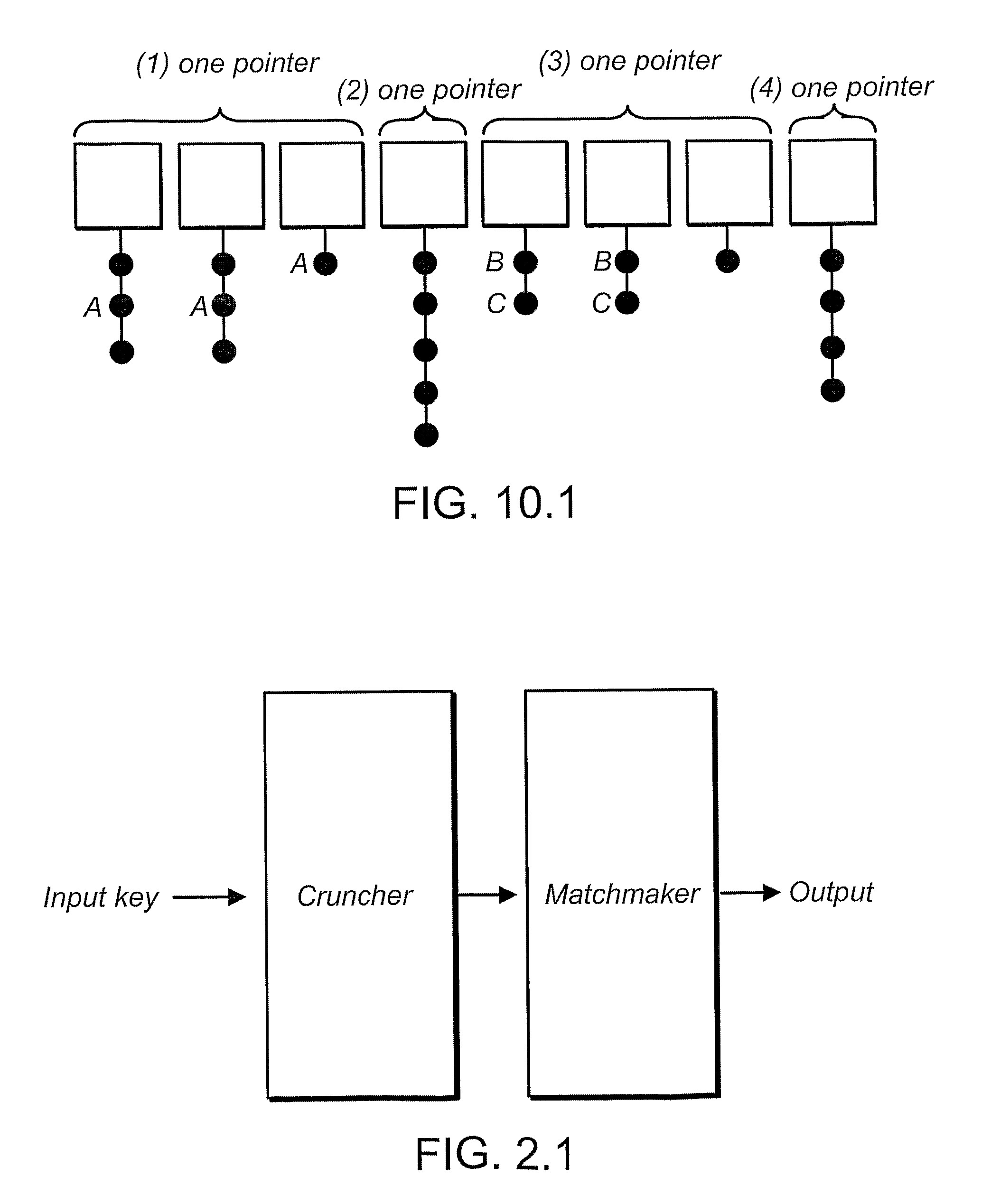Method for data packet classification in a data communications network
a data communication network and data packet technology, applied in the field of data packet classification in the data communication network, to achieve the effect of reducing storage and reducing the number of redundant pointers stored
- Summary
- Abstract
- Description
- Claims
- Application Information
AI Technical Summary
Benefits of technology
Problems solved by technology
Method used
Image
Examples
Embodiment Construction
[0046]Before a detailed discussion of embodiments of the invention is given, a general data structure solving the packet classification problem forming a basis to the present invention shall be discussed in more detail to ease the understanding of the principles of the invention.
[0047]D-dimensional packet classification, or simply packet classification, means to select from a list of rules or classes the first rule that matches a packet. Each rule consists of D intervals corresponding to D header fields in the packet. Let Ri be the ith rule and [xij, yij] the jth interval of rule Ri. Note that, for addresses, intervals are sometimes represented by prefixes and for protocols by single points.
[0048]A packet with header fields h1, h2, . . . , hD matches rule Ri if and only if xij≦hj≦yij for all j=1, 2, . . . , D.
[0049]Typically, there are two dominating approaches to packet classification: Ternary CAMs which is a brute force hardware solution and algorithmic solutions using heuristics ...
PUM
 Login to View More
Login to View More Abstract
Description
Claims
Application Information
 Login to View More
Login to View More - R&D
- Intellectual Property
- Life Sciences
- Materials
- Tech Scout
- Unparalleled Data Quality
- Higher Quality Content
- 60% Fewer Hallucinations
Browse by: Latest US Patents, China's latest patents, Technical Efficacy Thesaurus, Application Domain, Technology Topic, Popular Technical Reports.
© 2025 PatSnap. All rights reserved.Legal|Privacy policy|Modern Slavery Act Transparency Statement|Sitemap|About US| Contact US: help@patsnap.com



